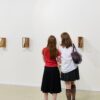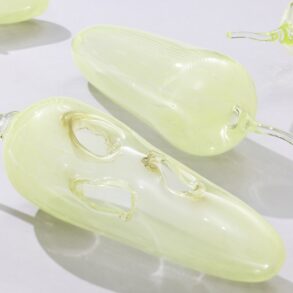When Justine Kong Sing stepped off a steamship into Edwardian London, the Nundle-born daughter of a Chinese merchant could tell straight away she was a long way from Australia: amid the “roar and rush” of the city, no one seemed to notice her.
“In the colonies, where foreigners are treated differently, an Oriental suffers keenly the mortification of being stared at, and often assaulted, because of his color!” she wrote in a widely published account.
But the 43-year-old soon attracted a different kind of attention, studying at the Westminster School of Art and exhibiting at London’s Royal Academy and the Paris Salon. Basing herself in Chelsea, her specialty was watercolour-on-ivory miniature portraits, painting “London Society beauties” and a Chinese minister’s wife.
But one pocket-sized piece, painted in 1912 – soon after she arrived in England – and titled simply Me, has Kong Sing herself staring quizzically at the viewer, eyebrow arched and head tilted under a green hat.
Kong Sing’s known body of work is tiny in almost every sense, and for the Art Gallery of South Australia (AGSA) curator Elle Freak, she remains an “enigma”.
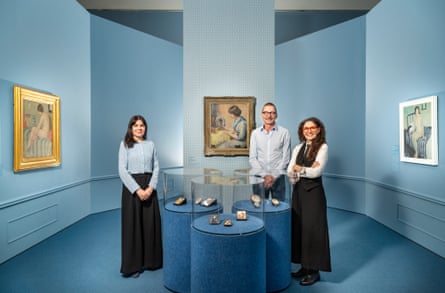
Freak is a co-curator of Dangerously Modern: Australian Women Artists in Europe 1890-1940, an expansive new exhibition co-presented by AGSA and the Art Gallery of New South Wales. Some of the 50 featured artists are already well-known: the Archibald-winning face of Nora Heysen; the gentle cubism of Dorrit Black; Margaret Preston’s still life studies; and the vivid, stippled colours of Grace Cossington Smith.
But many, like Kong Sing, are being salvaged from obscurity. “That’s been the challenge of the whole project,” Freak says. “Especially these artists who were working internationally, trying to trace their movements, trying to find their works that sold overseas.
“There are some artists along the way where we’ve come across a work and it’s the only example that we really know.”
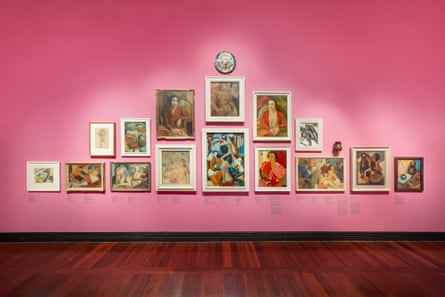



Freak and co-curators Tracey Lock and Wayne Tunnicliffe spent years mapping this intergenerational movement of women who traded the antipodes for Bohemian melting pots in Bloomsbury and Chelsea, or Paris’s left bank. From the late 19th century they abandoned the parochial constraints of the home and the homeland to make their own way on and off the canvas.
For Victorian-born Agnes Goodsir, Paris was a place where “art is something more than a polite hobby”. While Goodsir made a living from conventional commissions, Freak says her private works are often “subtly subversive and coated with sapphic symbolism”.
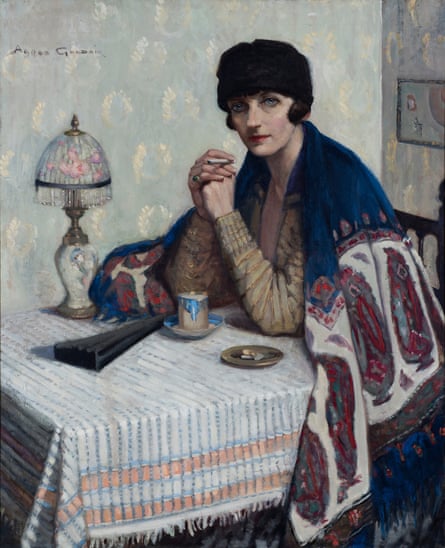



“She really was committed to this emotional form of realism, where she was more interested in the mood of her sitter,” Freak says.
Often that sitter was Cherry: the nickname of Rachel Dunn, a divorced American musician and Goodsir’s long-term partner, who is seen in works such as 1925’s Girl with Cigarette.
Goodsir was pipped to be the first Australian woman elected to the Société Nationale des Beaux-Arts by Bessie Davidson, an Adelaide-born artist who also became the vice-president of the Société des Femmes Artistes Modernes.
Davidson’s painting Intérieur (interior) was also completed in Paris in 1925, and turns the familiar trope of a bedroom scene into a site of intimacy and liberation; we see a hairbrush teetering on the edge of a dresser, a nude study perched above the unmade bed – and the reflection of Davidson’s French partner Marguerite Le Roy just visible in a mirror.
“You get a sense that a moment has just passed,” Freak says.
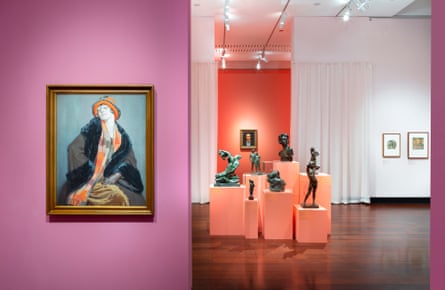



Dangerously Modern’s focus is deliberately blurry; Australian and New Zealand-born expatriates are placed alongside inbound migrants, reflecting a decoupling from a notion of national identity that resurgent – and male-led – art movements back home were trying to galvanise. Freak and her colleagues trace more subtle points of convergence and exchange: Kong Sing once shared a Sydney studio with Florence Rodway; oils by Hilda Rix Nicholas and Ethel Carrick respond to exoticised colours and markets of Tangier, Morocco and Kairouan, Tunisia; and Girl in the sunshine, by New Zealand-born Edith Collier, was painted in the Irish village of Bunmahon, as part of a 1915 summer class led by Margaret Preston.
A trio of paintings by Dorrit Black, Grace Crowley and Anne Dangar each capture a different view of the French village Mirmande – all three painted on the same field excursion in the summer of 1928.




“You’ve got the Irish moment, you’ve got a Mirmande moment, you’ve got your circle of artists in the Latin Quarter in Paris, all living in close contact with one another,” Freak says. In fact, Bowen and Davidson “lived in the very same apartment building, and Bowen referred to Davidson as ‘the old Australian impressionist on the top floor’”.
For artists who bucked tradition, borders and convention, their often cool reception back home and subsequent omission from the Australian canon was structural, geographic and political.
The show’s title comes from Thea Proctor, who was amused to be regarded as “dangerously modern” upon her homecoming in 1926. Freak and her co-curators also point to the art historian Bernard Smith’s dismissive labelling of female expatriate artists as mere “messenger girls” in 1988.
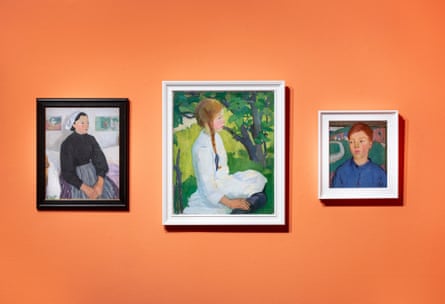



Some works were literally too hot to handle; it’s hard to picture a stronger expression of patriarchal suppression than the day Collier arrived home to find her father had burned a series of her boundary-pushing nudes. (A rare survivor appears in Dangerously Modern, making its first Australian appearance.)
For Goodsir, at least, her love and muse ensured her legacy would be waiting once Australia caught up. “After Goodsir passed away, Cherry sent her works back to Australia and said to keep them until audiences were ready – and then to distribute them more widely,” Freak says.
Kong Sing died in Sydney in 1960, having eventually returned to “the colonies” after two decades in England and Spain; a niece donated Me to AGNSW the following year. Now, elevated into an alternative Australian canon, Kong Sing has another opportunity to turn heads in her home country for her watercolours – not her complexion.
-
Dangerously Modern: Australian Women Artists in Europe 1890–1940 is showing at AGSA until 7 September, and AGNSW from 11 October 11 to 1 February 2026
This post was originally published on this site be sure to check out more of their content

